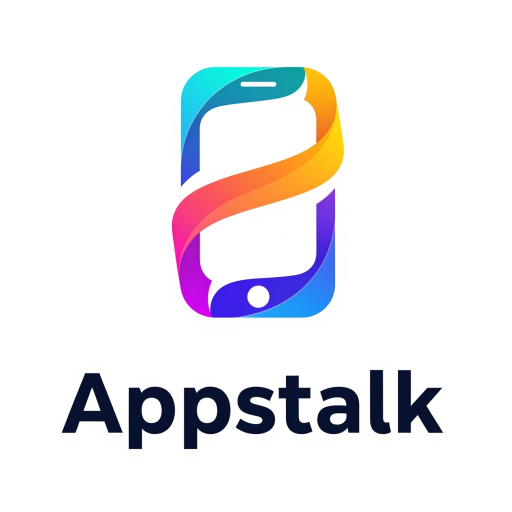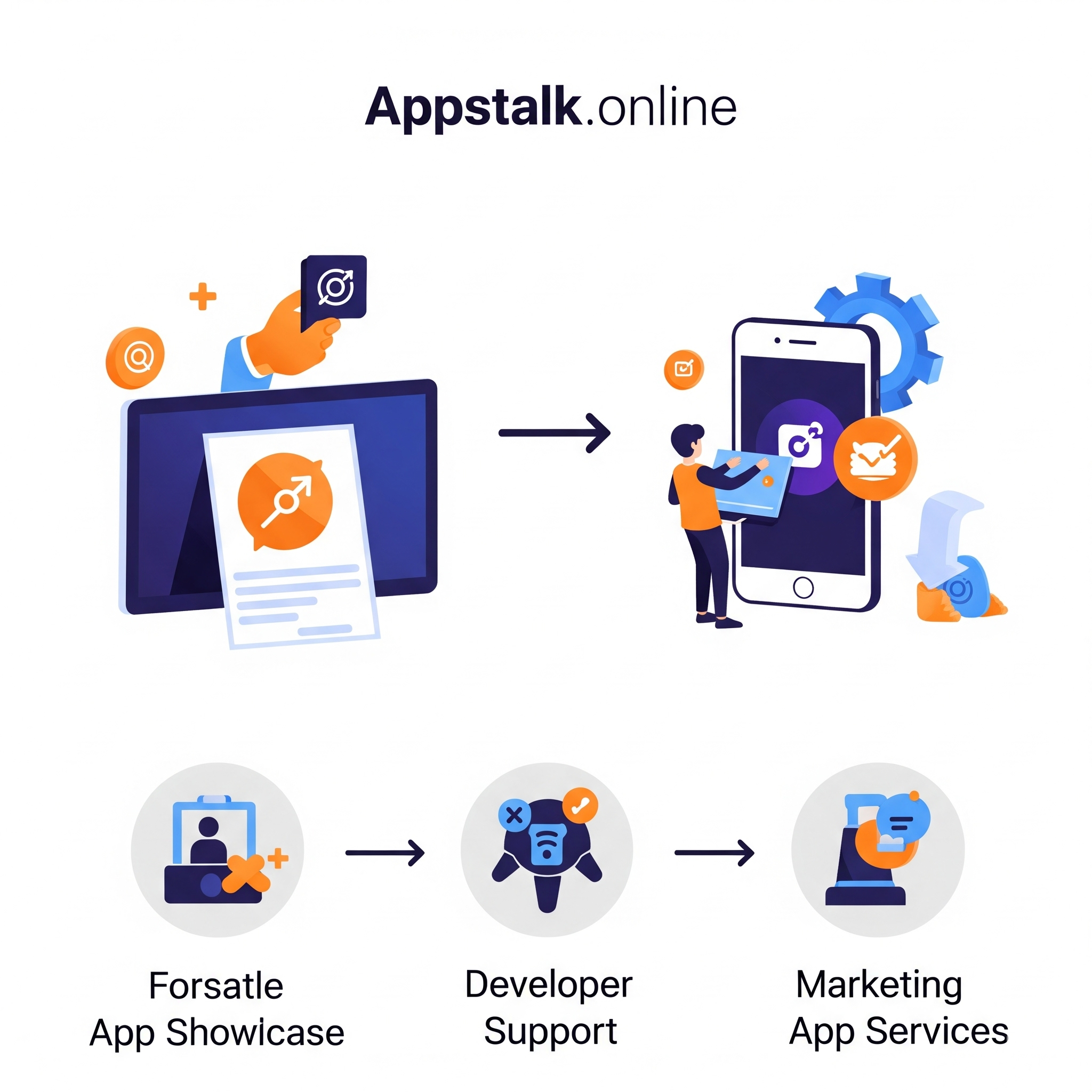Capturing Your Audience's Interest
Introduction: Why First Impressions Matter
Imagine this: you click on a blog post, eager to learn something new or solve a pressing problem. But the first few sentences are dull, unclear, or fail to connect with you. What do you do? If you're like most readers, you leave. That's why a blog post's introduction is more than just a formality—it's the make-or-break moment. Your introduction needs to act like a magnet, pulling readers in and encouraging them to stay.
In this guide, we'll explore the art and science of writing engaging introductions. Whether you're a seasoned writer or just starting, these insights will help you captivate your audience from the very first sentence.
Understanding the Role of an Introduction
An introduction sets the tone for the entire piece. It tells readers what to expect, why they should care, and what value they'll gain by continuing to read. Think of it as a preview or trailer for your content. It should be:
-
Captivating: Sparks curiosity or emotion
-
Clear: Tells the reader what the post is about
-
Relevant: Addresses the reader's needs or pain points
-
Concise: Gets to the point quickly
An effective introduction does more than introduce; it connects.
Common Mistakes Writers Make
Before diving into what makes a great introduction, let's look at what to avoid:
-
Being too vague: General statements like "This blog post is about blogging" don't offer any value.
-
Taking too long to get to the point: Readers have short attention spans.
-
Failing to connect emotionally: No one wants to read something that feels robotic or distant.
-
Not stating a clear benefit: Why should the reader care?
Avoiding these pitfalls sets the stage for a strong and meaningful opening.
Crafting the Perfect Hook
The first sentence—your hook—is arguably the most important part of your introduction. Its sole purpose is to make the reader want to continue. Here are several ways to do it:
1. Ask a Provocative Question
Questions engage curiosity. For example: "Ever wondered why some blog posts go viral while others fade into obscurity?"
2. Use a Shocking Statistic
Surprising facts can immediately draw interest: "Did you know 55% of readers spend less than 15 seconds on a web page?"
3. Start with a Relatable Problem
If you identify a common pain point, readers will feel seen: "You spend hours writing a blog post, but no one reads it. What went wrong?"
4. Share a Personal Story
Personal anecdotes add authenticity and relatability: "When I started blogging, I wrote posts no one read. Then I changed my approach to introductions."
Highlighting the Reader's Pain Points
One of the fastest ways to connect with a reader is to show that you understand their problems. Address their struggles right away:
-
"Struggling to get readers past the first paragraph?"
-
"Frustrated that your bounce rate keeps climbing?"
When readers see their challenges reflected in your words, they are more likely to trust you and stay engaged.
Outlining the Value Proposition
Once you've hooked your readers, tell them what's in it for them. Be specific:
-
"In this post, you’ll learn 7 proven techniques to write introductions that keep readers hooked."
-
"By the end of this article, you'll have a blueprint for crafting compelling openings every time."
This creates a clear reason to keep reading.
Matching Tone with Audience Expectations
Your tone should resonate with your target audience. For instance:
-
A business blog might use a more formal or informative tone.
-
A lifestyle blog can be casual, friendly, or humorous.
-
A tech blog might be more analytical but approachable.
Understanding your audience's preferences allows you to strike the right emotional chord.
Examples of Strong Introductions
Let's look at a few different types of introductions in action.
Example 1: Question-Based Introduction
"Have you ever spent hours writing a blog post, only for no one to read it? You’re not alone. The problem often isn’t your content—it’s your introduction."
Example 2: Statistic-Based Introduction
"According to HubSpot, 43% of people admit to skimming blog posts. That means you have mere seconds to capture attention—starting with your opening line."
Example 3: Story-Based Introduction
"When I launched my first blog, I had no idea how important introductions were. I thought good content would speak for itself. I was wrong."
Each example uses a different approach, but all aim to hook, relate, and inform.
Transitioning into the Body Smoothly
A great introduction isn’t just about attention—it also paves the way for a smooth transition into the main content. Use signposts to guide the reader:
-
"In this guide, we'll cover..."
-
"Here's what you need to know..."
-
"Let's dive into the steps..."
This prepares the reader for what comes next, creating a logical flow.
Tips to Test and Improve Your Introductions
Even the best writers test and refine their introductions. Here’s how:
-
A/B Test Openings: Try different hooks and measure reader engagement.
-
Use Analytics: Track time on page and bounce rate to see how intros perform.
-
Read Aloud: Does it sound engaging and natural?
-
Get Feedback: Ask peers or beta readers if your intro compels them to read more.
Tools and Resources to Enhance Your Openings
-
Grammarly: For grammar and clarity
-
Hemingway Editor: For readability
-
Co Schedule Headline Analyser: To test headline and hook strength
-
Republicanism: To find common reader questions and pain points
Common Structures That Work
You don't always need to reinvent the wheel. Here are tried-and-true structures:
1. Problem > Agitation > Solution (PAS)
-
Identify the problem
-
Make it feel urgent or frustrating
-
Introduce your solution (the content)
2. Before > After > Bridge
-
Describe the reader’s world before your advice
-
Show how it improves after
-
Bridge with your content
3. The Story Arc
-
Begin with a personal or fictional anecdote
-
Introduce the broader topic
-
Promise actionable takeaways
Final Thoughts
A strong introduction is your blog post's first impression—and often its only chance to hook readers. With the right strategy, tone, and structure, you can craft openings that not only attract attention but also build trust and anticipation.
So the next time you write a blog post, don't treat the introduction as an afterthought. Give it the time and creativity it deserves. Your readers’ engagement depends on it.
Start strong. Hook hard. Keep them reading.
Capturing Your Audience's Interest
Introduction: Why First Impressions Matter
Imagine this: you click on a blog post, eager to learn something new or solve a pressing problem. But the first few sentences are dull, unclear, or fail to connect with you. What do you do? If you're like most readers, you leave. That's why a blog post's introduction is more than just a formality—it's the make-or-break moment. Your introduction needs to act like a magnet, pulling readers in and encouraging them to stay.
In this guide, we'll explore the art and science of writing engaging introductions. Whether you're a seasoned writer or just starting, these insights will help you captivate your audience from the very first sentence.
Understanding the Role of an Introduction
An introduction sets the tone for the entire piece. It tells readers what to expect, why they should care, and what value they'll gain by continuing to read. Think of it as a preview or trailer for your content. It should be:
-
Captivating: Sparks curiosity or emotion
-
Clear: Tells the reader what the post is about
-
Relevant: Addresses the reader's needs or pain points
-
Concise: Gets to the point quickly
An effective introduction does more than introduce; it connects.
Common Mistakes Writers Make
Before diving into what makes a great introduction, let's look at what to avoid:
-
Being too vague: General statements like "This blog post is about blogging" don't offer any value.
-
Taking too long to get to the point: Readers have short attention spans.
-
Failing to connect emotionally: No one wants to read something that feels robotic or distant.
-
Not stating a clear benefit: Why should the reader care?
Avoiding these pitfalls sets the stage for a strong and meaningful opening.
Crafting the Perfect Hook
The first sentence—your hook—is arguably the most important part of your introduction. Its sole purpose is to make the reader want to continue. Here are several ways to do it:
1. Ask a Provocative Question
Questions engage curiosity. For example: "Ever wondered why some blog posts go viral while others fade into obscurity?"
2. Use a Shocking Statistic
Surprising facts can immediately draw interest: "Did you know 55% of readers spend less than 15 seconds on a web page?"
3. Start with a Relatable Problem
If you identify a common pain point, readers will feel seen: "You spend hours writing a blog post, but no one reads it. What went wrong?"
4. Share a Personal Story
Personal anecdotes add authenticity and relatability: "When I started blogging, I wrote posts no one read. Then I changed my approach to introductions."
Highlighting the Reader's Pain Points
One of the fastest ways to connect with a reader is to show that you understand their problems. Address their struggles right away:
-
"Struggling to get readers past the first paragraph?"
-
"Frustrated that your bounce rate keeps climbing?"
When readers see their challenges reflected in your words, they are more likely to trust you and stay engaged.
Outlining the Value Proposition
Once you've hooked your readers, tell them what's in it for them. Be specific:
-
"In this post, you’ll learn 7 proven techniques to write introductions that keep readers hooked."
-
"By the end of this article, you'll have a blueprint for crafting compelling openings every time."
This creates a clear reason to keep reading.
Matching Tone with Audience Expectations
Your tone should resonate with your target audience. For instance:
-
A business blog might use a more formal or informative tone.
-
A lifestyle blog can be casual, friendly, or humorous.
-
A tech blog might be more analytical but approachable.
Understanding your audience's preferences allows you to strike the right emotional chord.
Examples of Strong Introductions
Let's look at a few different types of introductions in action.
Example 1: Question-Based Introduction
"Have you ever spent hours writing a blog post, only for no one to read it? You’re not alone. The problem often isn’t your content—it’s your introduction."
Example 2: Statistic-Based Introduction
"According to HubSpot, 43% of people admit to skimming blog posts. That means you have mere seconds to capture attention—starting with your opening line."
Example 3: Story-Based Introduction
"When I launched my first blog, I had no idea how important introductions were. I thought good content would speak for itself. I was wrong."
Each example uses a different approach, but all aim to hook, relate, and inform.
Transitioning into the Body Smoothly
A great introduction isn’t just about attention—it also paves the way for a smooth transition into the main content. Use signposts to guide the reader:
-
"In this guide, we'll cover..."
-
"Here's what you need to know..."
-
"Let's dive into the steps..."
This prepares the reader for what comes next, creating a logical flow.
Tips to Test and Improve Your Introductions
Even the best writers test and refine their introductions. Here’s how:
-
A/B Test Openings: Try different hooks and measure reader engagement.
-
Use Analytics: Track time on page and bounce rate to see how intros perform.
-
Read Aloud: Does it sound engaging and natural?
-
Get Feedback: Ask peers or beta readers if your intro compels them to read more.
Tools and Resources to Enhance Your Openings
-
Grammarly: For grammar and clarity
-
Hemingway Editor: For readability
-
Co Schedule Headline Analyser: To test headline and hook strength
-
Republicanism: To find common reader questions and pain points
Common Structures That Work
You don't always need to reinvent the wheel. Here are tried-and-true structures:
1. Problem > Agitation > Solution (PAS)
-
Identify the problem
-
Make it feel urgent or frustrating
-
Introduce your solution (the content)
2. Before > After > Bridge
-
Describe the reader’s world before your advice
-
Show how it improves after
-
Bridge with your content
3. The Story Arc
-
Begin with a personal or fictional anecdote
-
Introduce the broader topic
-
Promise actionable takeaways
Final Thoughts
A strong introduction is your blog post's first impression—and often its only chance to hook readers. With the right strategy, tone, and structure, you can craft openings that not only attract attention but also build trust and anticipation.
So the next time you write a blog post, don't treat the introduction as an afterthought. Give it the time and creativity it deserves. Your readers’ engagement depends on it.
Start strong. Hook hard. Keep them reading.
Capturing Your Audience's Interest
Introduction: Why First Impressions Matter
Imagine this: you click on a blog post, eager to learn something new or solve a pressing problem. But the first few sentences are dull, unclear, or fail to connect with you. What do you do? If you're like most readers, you leave. That's why a blog post's introduction is more than just a formality—it's the make-or-break moment. Your introduction needs to act like a magnet, pulling readers in and encouraging them to stay.
In this guide, we'll explore the art and science of writing engaging introductions. Whether you're a seasoned writer or just starting, these insights will help you captivate your audience from the very first sentence.
Understanding the Role of an Introduction
An introduction sets the tone for the entire piece. It tells readers what to expect, why they should care, and what value they'll gain by continuing to read. Think of it as a preview or trailer for your content. It should be:
-
Captivating: Sparks curiosity or emotion
-
Clear: Tells the reader what the post is about
-
Relevant: Addresses the reader's needs or pain points
-
Concise: Gets to the point quickly
An effective introduction does more than introduce; it connects.
Common Mistakes Writers Make
Before diving into what makes a great introduction, let's look at what to avoid:
-
Being too vague: General statements like "This blog post is about blogging" don't offer any value.
-
Taking too long to get to the point: Readers have short attention spans.
-
Failing to connect emotionally: No one wants to read something that feels robotic or distant.
-
Not stating a clear benefit: Why should the reader care?
Avoiding these pitfalls sets the stage for a strong and meaningful opening.
Crafting the Perfect Hook
The first sentence—your hook—is arguably the most important part of your introduction. Its sole purpose is to make the reader want to continue. Here are several ways to do it:
1. Ask a Provocative Question
Questions engage curiosity. For example: "Ever wondered why some blog posts go viral while others fade into obscurity?"
2. Use a Shocking Statistic
Surprising facts can immediately draw interest: "Did you know 55% of readers spend less than 15 seconds on a web page?"
3. Start with a Relatable Problem
If you identify a common pain point, readers will feel seen: "You spend hours writing a blog post, but no one reads it. What went wrong?"
4. Share a Personal Story
Personal anecdotes add authenticity and relatability: "When I started blogging, I wrote posts no one read. Then I changed my approach to introductions."
Highlighting the Reader's Pain Points
One of the fastest ways to connect with a reader is to show that you understand their problems. Address their struggles right away:
-
"Struggling to get readers past the first paragraph?"
-
"Frustrated that your bounce rate keeps climbing?"
When readers see their challenges reflected in your words, they are more likely to trust you and stay engaged.
Outlining the Value Proposition
Once you've hooked your readers, tell them what's in it for them. Be specific:
-
"In this post, you’ll learn 7 proven techniques to write introductions that keep readers hooked."
-
"By the end of this article, you'll have a blueprint for crafting compelling openings every time."
This creates a clear reason to keep reading.
Matching Tone with Audience Expectations
Your tone should resonate with your target audience. For instance:
-
A business blog might use a more formal or informative tone.
-
A lifestyle blog can be casual, friendly, or humorous.
-
A tech blog might be more analytical but approachable.
Understanding your audience's preferences allows you to strike the right emotional chord.
Examples of Strong Introductions
Let's look at a few different types of introductions in action.
Example 1: Question-Based Introduction
"Have you ever spent hours writing a blog post, only for no one to read it? You’re not alone. The problem often isn’t your content—it’s your introduction."
Example 2: Statistic-Based Introduction
"According to HubSpot, 43% of people admit to skimming blog posts. That means you have mere seconds to capture attention—starting with your opening line."
Example 3: Story-Based Introduction
"When I launched my first blog, I had no idea how important introductions were. I thought good content would speak for itself. I was wrong."
Each example uses a different approach, but all aim to hook, relate, and inform.
Transitioning into the Body Smoothly
A great introduction isn’t just about attention—it also paves the way for a smooth transition into the main content. Use signposts to guide the reader:
-
"In this guide, we'll cover..."
-
"Here's what you need to know..."
-
"Let's dive into the steps..."
This prepares the reader for what comes next, creating a logical flow.
Tips to Test and Improve Your Introductions
Even the best writers test and refine their introductions. Here’s how:
-
A/B Test Openings: Try different hooks and measure reader engagement.
-
Use Analytics: Track time on page and bounce rate to see how intros perform.
-
Read Aloud: Does it sound engaging and natural?
-
Get Feedback: Ask peers or beta readers if your intro compels them to read more.
Tools and Resources to Enhance Your Openings
-
Grammarly: For grammar and clarity
-
Hemingway Editor: For readability
-
Co Schedule Headline Analyser: To test headline and hook strength
-
Republicanism: To find common reader questions and pain points
Common Structures That Work
You don't always need to reinvent the wheel. Here are tried-and-true structures:
1. Problem > Agitation > Solution (PAS)
-
Identify the problem
-
Make it feel urgent or frustrating
-
Introduce your solution (the content)
2. Before > After > Bridge
-
Describe the reader’s world before your advice
-
Show how it improves after
-
Bridge with your content
3. The Story Arc
-
Begin with a personal or fictional anecdote
-
Introduce the broader topic
-
Promise actionable takeaways
Final Thoughts
A strong introduction is your blog post's first impression—and often its only chance to hook readers. With the right strategy, tone, and structure, you can craft openings that not only attract attention but also build trust and anticipation.
So the next time you write a blog post, don't treat the introduction as an afterthought. Give it the time and creativity it deserves. Your readers’ engagement depends on it.
Start strong. Hook hard. Keep them reading.



